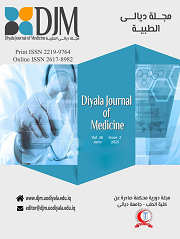Study of Gene Expression Variation of Heat Shock Factor 1 and Estimates of the Concentration of Epithelial- Derived Neutrophil- Activating Protein-78, and Ability for Bacterial Biofilm Formation in Patients with Tonsillitis
Main Article Content
Abstract
Background: Tonsillitis is an inflammation of the tonsils, often spreading to the adenoids and lingual tonsils. It is influenced by immune and genetic factors. This study aimed to evaluate the gene expression of Heat Shock Factor 1(HSF1), a protein that regulates cellular responses to stress, especially heat stress, and to measure the concentration of epithelial-derived neutrophil- activating protein-78, a chemokine involved in neutrophil activation and recruitment during inflammation. The study also sought to explore the relationship between these molecules and their roles in inflammation and stress responses. Additionally, it aimed to isolate bacterial species responsible for tonsillitis and assess their ability to form biofilms.
Patients and Methods: Sixty blood samples from tonsillitis patients and 30 from healthy individuals were collected, along with 200 throat swabs from patients, between December 2023 and March 2024. Blood samples were processed for ELISA to quantify ENA-78 and for RNA extraction to analyze HSF1 gene expression. Bacterial cultures were grown on Congo Red Agar to detect biofilm production.
Results: Out of 120 positive cultures, 70% were Gram positive, 23% were Gram negative, and 7% mixed. ENA-78 levels were significantly higher in patients (619.2±123.4) than in controls (490.1±145.8) pg/mL (P≤0.0001) HSF1 gene expression was also significantly elevated in patients (9.913) (P₌ 0.0001).
Conclusion: Gram positive bacteria, particularly Staphylococcus aureus, were the predominant biofilm producers, while Escherichia coli was common among Gram-negative isolates. Significant differences in ENA-78 levels and HSF1 expression suggest their potential as diagnostic markers and targets for immune - based therapies.
Keywords: Tonsillitis, ENA-78, HSF1, Biofilm formation.
Downloads
Article Details

This work is licensed under a Creative Commons Attribution 4.0 International License.





